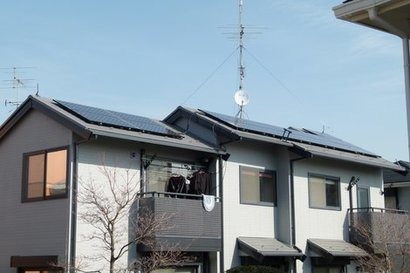
The Rocky Mountain Institute (RMI) and HOMER Energy have released a report entitled The Economics of Load Defection, which sets out where and when grid-connected solar-plus-battery systems could supply the majority of customers’ electricity needs that traditionally the grid would have supplied.
The continual climb of retail prices for grid electricity coupled with the decline of costs for solar PV and batteries means that grid-connected solar-plus-battery systems are an increasingly cost-effective option for customers in the next 10 to 15 years in many parts of the world. The report was compiled using HOMER Energy’s software system and explains just how much electricity load and revenue loss utilities could face. It also sets out the implications for the utilities and possible ways forward.
Compared to off-grid solar-plus-battery systems modelled in RMI’s 2014 report, The Economics of Grid Defection, the grid-connected systems modelled in this report are smaller with lower costs. This makes them more economic for more customers in more places across the globe. The contribution made by the grid to meeting customers electricity needs will therefore shrink significantly while solar PV rises to supply the demand at lower cost.
“These findings should be compelling for customers and technology providers” said RMI Principal and report author James Mandel. “No matter how expensive retail electricity gets in the future, customers that invest in these grid-connected systems can contain their electricity costs at or below a ‘peak price,’ yielding significant savings on their monthly utility bill.”
For many utilities, this could have huge implications in that if only a fraction of customers adopt such systems, the utilities could face lost kWh sales from central generation. This would potentially undermine revenue needed for ongoing grid investment and maintenance.
In the Northeast United States, for example, maximum residential and commercial load defection could total 140 million MWh and $35 billion per year by 2030.
RMI manager and report co-author Leia Guccione added that this is not all risk, because these solar-plus-battery systems are grid-connected they can offer value and services back to the grid, therefore it is not necessary to see them entirely as a threat. Indeed, it is likely these systems will play a central role in the grid of the future, although what that role will be has yet to be determined. It will most likely be guided by the evolution of retail pricing structures, utility business models and regulatory frameworks and this will set the grid on one of two major possible trajectories.
According to Jules Kortenhorst, CEO of Rocky Mountain Institute and Carbon War Room, one fork in the road leads to pricing structures, business models and regulatory environments that favour eventual grid defection. The other fork embraces those same factors as an appropriately valued part of a transactive grid with lower system-wide costs and the foundation of a reliable, resilient, affordable and low-carbon grid of the future in which customers are empowered with choice. This is why RMI is focusing on new utility business models, regulatory reform in places like New York and accelerated adoption of rooftop solar – so that the grid of the future can provide customers reliable, clean, affordable power for decades to come.
For additional information:

